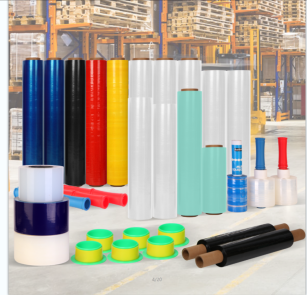Eco-Friendly Transparent Waste Bags for Easy Sorting and Effective Recycling Solutions
The Importance of Clear Garbage Bags in Modern Waste Management
In our daily lives, waste management has become an increasingly pressing issue, as more individuals and communities strive to reduce their environmental footprint. One innovation that has gained attention in this arena is the use of clear garbage bags. While they may seem simple, clear garbage bags offer a range of benefits that can aid in efficient waste management, recycling, and overall sustainability.
Enhanced Visibility and Sorting
One of the most significant advantages of clear garbage bags is their transparency. This feature allows for easy visibility of the contents within the bag, facilitating better sorting and disposal practices. For waste management professionals, this means quicker identification of recyclable materials, food waste, and general trash. In many municipalities, waste collection services are divided into different categories—recycling, organic waste, and landfill. With clear bags, collectors can instantly assess the contents without having to open each individual bag, thus streamlining the waste collection process.
Moreover, for individuals and businesses, clear bags encourage more responsible disposal habits. When one can see the waste they are producing, it may prompt a reconsideration of what is being thrown away. This heightened awareness can lead to reduced waste generation and improved recycling efforts.
Promoting Recycling Efforts
Clear garbage bags can significantly influence recycling rates within communities. Many recycling programs require that participants separate their recyclables from general trash. The use of clear bags simplifies this process and serves as a visual cue for consumers to be more mindful about their waste. When individuals can clearly see the materials they are disposing of, they are more likely to make the effort to recycle items that can be diverted from landfills.
clear garbage bags

In educational settings, using clear bags can be instrumental in teaching children about the importance of recycling and waste separation. Classroom activities that involve sorting waste into clear bags can create a hands-on learning experience that instills the value of sustainability in young minds.
Reducing Contamination
Another critical benefit of clear garbage bags is their role in reducing contamination within recyclables. Contamination occurs when non-recyclable items are mixed with recyclable materials, making it difficult or impossible for waste processors to recycle the items efficiently. Clear bags allow waste managers to identify contamination quickly, enabling them to take corrective measures before the materials are processed. By minimizing contamination, clear garbage bags help maintain the integrity of recycling streams, ultimately benefiting the environment.
Encouraging Compliance with Regulations
Many cities and waste management programs have specific regulations regarding waste disposal. Clear garbage bags serve as tools for enforcement, allowing officials to monitor and ensure compliance with these regulations. For instance, if residents are required to use clear bags for certain types of waste, it becomes easier for authorities to identify violators. Consequently, this can lead to more responsible waste disposal practices and a greater commitment to community cleanliness.
Conclusion
In conclusion, clear garbage bags are more than just a practical solution for waste disposal; they are vital tools in the quest for improved waste management and environmental sustainability. Their transparent nature enhances visibility for sorting and recycling, promotes conscientious waste disposal, reduces contamination, and helps enforce regulatory compliance. As communities around the globe seek innovative solutions to their waste management challenges, the simple yet effective clear garbage bag stands out as a functional choice that aligns with modern sustainability goals. By adopting clear bags, we take a collective step toward a cleaner, greener future.
-
Have the freedom of customizing your custom mailers any way you want! Our dedicated packaging support will help deliver you the mailing experience you need to elevate your shipping experience to the next level! Start making a strong impression on your customers and stand out from your competitors! -
LIYA uses high quality raw materials which directly purchased from large enterprises domestic and overseas such as PetroChina, Sinopec, Sabic, Equate, ExxonMobil, Dow Chemical, Total, and Borouge, ensuring the price advantage and quality of the raw materials. -
LIYA uses high quality raw materials which directly purchased from large enterprises domestic and overseas such as PetroChina, Sinopec, Sabic, Equate, ExxonMobil, Dow Chemical, Total, and Borouge, ensuring the price advantage and quality of the raw materials.





